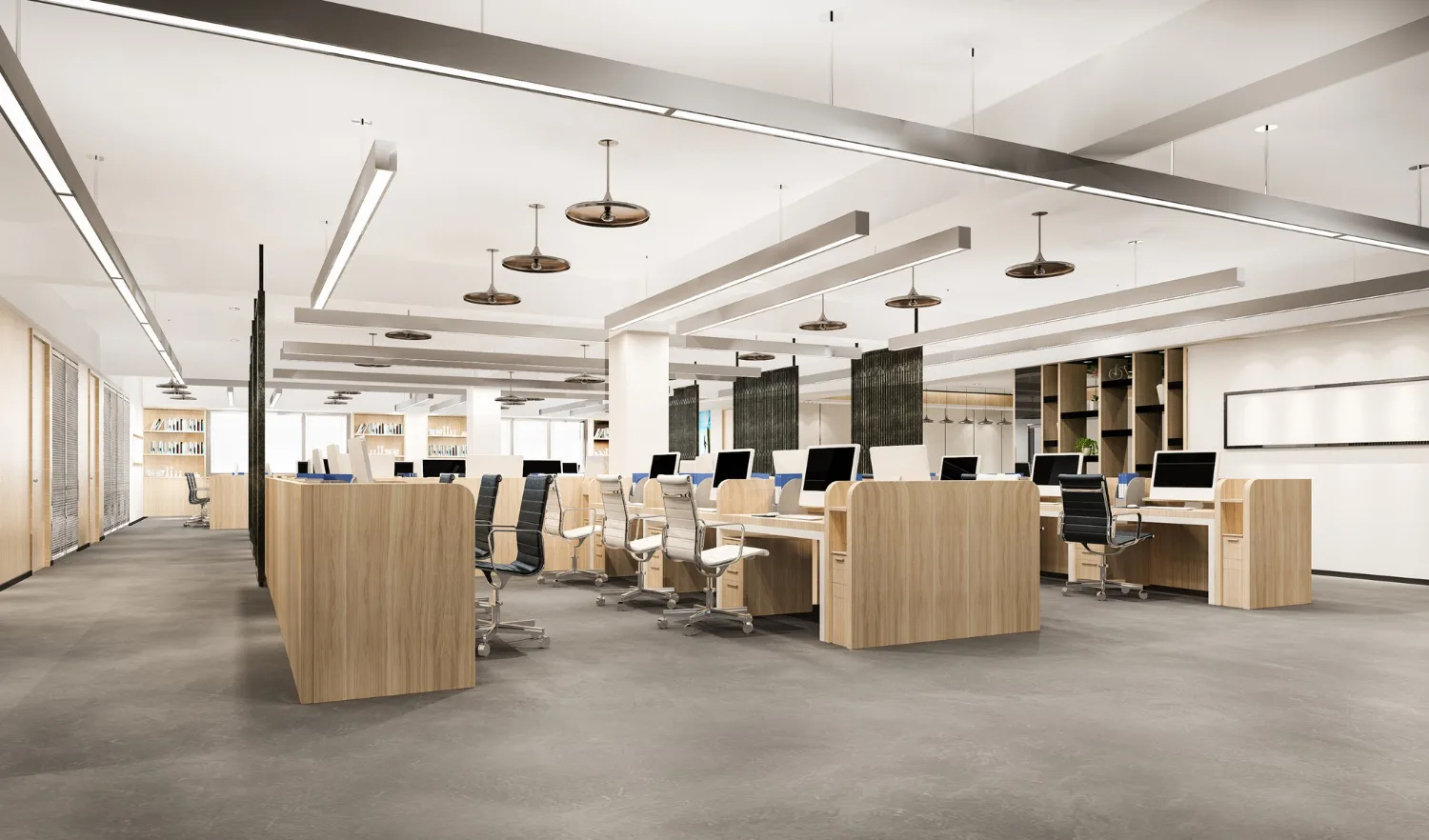India’s commercial real estate scene has been rapidly changing, with urbanization, shifting work patterns, and tech innovations playing a big role. Looking ahead to 2025, we can expect even more growth and some challenges. Knowing the trends influencing the market is important for investors and professionals when it comes to making the right decisions.
In this blog, we’ll explore what the commercial real estate landscape in India will look like in 2025 and the key developments that will define the market.
Table of Contents
The Growing Demand for Hybrid Workspaces and Flexible Offices
The pandemic reshaped our work habits, and hybrid and remote work are now here to stay. As we approach 2025, office spaces will keep adapting to these changes. Businesses will seek more flexible office solutions that let employees work from home when needed, while still having the option to use shared office spaces for collaboration.
As a result, the demand for coworking spaces and flexible office layouts will continue to rise. These spaces will offer features like shared workstations, private meeting rooms, and hot-desking options. Cities like Bangalore, Delhi NCR, and Mumbai are already seeing a rise in coworking hubs, and by 2025, this trend will expand even more, especially in Tier 2 cities where businesses are growing at a rapid pace.
The Role of Technology in the Future of Commercial Real Estate
Technology is transforming India’s commercial real estate sector, and by 2025, we can expect to see a lot of changes. Many office buildings and commercial spaces will be equipped with smart systems that make them more energy-efficient, secure, and productive. Building management systems (BMS) will help cut down on costs, improve building operations, and support eco-friendly initiatives. With the help of data analytics, businesses will be able to better understand how their spaces are being used and make more efficient decisions when it comes to leasing and managing property.
Growing Emphasis on Sustainability and Green Buildings
Sustainability will take center stage in India’s commercial real estate market by 2025. As awareness of climate change and environmental issues continues to rise, both developers and companies are prioritizing eco-friendly, energy-efficient buildings. Green certifications like LEED (Leadership in Energy and Environmental Design) and IGBC (Indian Green Building Council) are expected to become the norm for new commercial properties. By 2025, we’ll see more buildings in key cities featuring sustainable elements like solar panels, rainwater harvesting, energy-efficient HVAC systems, and green rooftops. These additions not only help the environment but also offer long-term cost savings for businesses.
Adapting Retail Real Estate to Changing Consumer Habits
India’s retail sector is in the midst of a transformation. With e-commerce booming, brick-and-mortar stores are rethinking how they can stay relevant by using technology to improve customer experiences. In 2025, you’ll see more retail spaces where the physical and digital worlds come together. This could mean stores using augmented reality (AR) or virtual reality (VR) to help customers visualize and interact with products before buying them. Malls will also shift their focus to creating more than just shopping spaces think entertainment, dining, and community hubs designed to attract more visitors.
Rise in Demand for Logistics and Warehousing
As e-commerce continues to grow and customers want quicker delivery times, the need for logistics and warehousing spaces will grow significantly by 2025. The increase in India’s middle class and the shift to online shopping fuel the demand for smarter supply chains and more storage facilities.
In the coming years, warehousing spaces will evolve to meet the demands of the digital economy. We’ll see the rise of high-tech warehouses equipped with robotics, AI-driven inventory management, and automated sorting systems. Major cities like Mumbai, Delhi NCR, and Hyderabad, as well as strategic locations along highways and near ports, will see a boom in warehousing infrastructure.
How Government Policies Will Shape Commercial Real Estate
Government policies will have a big influence on the commercial real estate market. By 2025, policies that focus on infrastructure development, smart cities, and investments in smaller cities will be major drivers of growth.
The government’s push towards the development of industrial corridors, smart cities, and infrastructural connectivity will enhance commercial real estate opportunities, particularly in less-explored areas. The implementation of the Goods and Services Tax (GST) has already streamlined real estate transactions and any new regulatory reforms in 2025 will continue to ease compliance for developers and attract more investors into the sector.
India’s Commercial Real Estate Market Is Gaining Momentum
India’s expanding economy is giving a big boost to the commercial real estate sector. Both local and international investors are flocking to cities like Bengaluru, Mumbai, and Gurgaon, which continue to be top choices for commercial properties. With more businesses needing office, retail, and industrial spaces, there’s a lot of room for investment. The launch of REITs has also made it simpler for smaller investors to participate, adding new energy to the market.
The Future of Commercial Real Estate in Smaller Cities
By 2025, there will be even more attention on Tier 2 and Tier 3 cities. As businesses expand beyond the major metro areas, cities like Pune, Ahmedabad, Jaipur, and Kochi are seeing a rise in demand for commercial real estate. With lower costs, better infrastructure, and an improved quality of life, these cities are becoming more attractive to companies.
For investors, these emerging cities will offer a wealth of opportunities, especially in office spaces, retail outlets, and warehouses. Developers will focus on creating properties that meet the needs of businesses looking for cost-effective spaces with solid infrastructure.
Co-Working Spaces and Business Hubs: A New Age of Collaboration
Co-working spaces will continue to be an essential part of India’s commercial real estate market, especially for startups, freelancers, and small businesses. By 2025, flexible workspaces will see even greater demand as more entrepreneurs turn to collaborative environments rather than traditional offices. The co-working sector will offer new services, like business guidance, networking events, and industry-focused partnerships. In cities like Bangalore, Mumbai, and Delhi NCR, where the startup scene is thriving, the need for co-working spaces will continue to grow.
Opportunities and Challenges in Commercial Real Estate by 2025
India's commercial real estate market is set to grow, but developers and investors will face challenges along the way. Rising construction costs, changing market demands, and evolving work trends could make things more complicated.
However, these challenges aren’t all negative they bring new growth opportunities. Developers who embrace sustainable design, use smart technologies, and offer flexible office spaces will be ahead of the curve, creating properties that attract both businesses and investors.
Are you ready to take advantage of the opportunities in India’s commercial real estate market in 2025? Keep an eye on these trends, plan strategically, and get ready to make the most of this growing sector.

